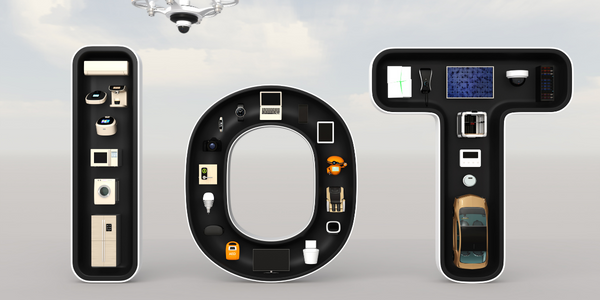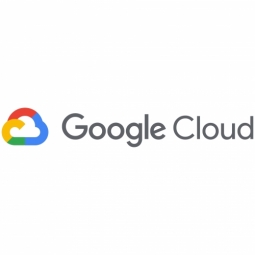Technology Category
- Cybersecurity & Privacy - Identity & Authentication Management
Applicable Industries
- Equipment & Machinery
- Finance & Insurance
Applicable Functions
- Procurement
- Sales & Marketing
Use Cases
- Tamper Detection
- Usage-Based Insurance
Services
- Cloud Planning, Design & Implementation Services
- Testing & Certification
About The Customer
Banco de Crédito del Perú (BCP) is a leading provider of integrated financial services in Peru, with a history spanning over 127 years. The bank serves over 13 million customers through a network with more than 8,340 points of contact. BCP offers a range of services, including asset management, exchange transactions, treasury, custody and investment consulting services, and financial research activities. In 2019, BCP embarked on a transformation journey to provide a quality product to its customers that would also allow the company to scale and become more competitive in Peru’s financial market.
The Challenge
Banco de Crédito del Perú (BCP), a leading financial institution in Peru, embarked on a transformation journey to enhance its digital sales and improve customer experience. The bank's digital marketing department sought to increase cross-sell rates and the average number of products per customer. However, they faced challenges in implementing new strategies on the bank's website front end, such as A/B testing with propensity models and maintaining secure lead databases. BCP also recognized the need to simplify the purchasing process for customers, as many people have a negative perception of banks and only purchase their products when necessary. The bank aimed to overcome these challenges in a market that is striving to increase banking penetration to 60% of the country's population in the next few years, amidst a digital transformation accelerated by the COVID-19 pandemic.
The Solution
BCP, in collaboration with Neo Consulting, initiated the One-click cross-sell project, designed to simplify the purchasing process for customers. The project was divided into three phases: identifying the opportunity, developing the architecture using BigQuery, and launching the solution. With direct integration with tools from Cloud Functions, Pub/Sub, BigQuery, and Cloud Scheduler, BCP was able to test and implement this functional solution within days. The solution allows BCP to identify its clients using cookies and link them to propensity models uploaded in the cloud. Customers who already have the cookies no longer have to fill out purchase intent forms, and instead, they express their intention to buy a product with a single click. The bank's channels then validate the identity of leads, process them, and offer the product they requested. The information is encrypted to protect customers' assets.
Operational Impact
Quantitative Benefit

Case Study missing?
Start adding your own!
Register with your work email and create a new case study profile for your business.
Related Case Studies.

Case Study
Smart Water Filtration Systems
Before working with Ayla Networks, Ozner was already using cloud connectivity to identify and solve water-filtration system malfunctions as well as to monitor filter cartridges for replacements.But, in June 2015, Ozner executives talked with Ayla about how the company might further improve its water systems with IoT technology. They liked what they heard from Ayla, but the executives needed to be sure that Ayla’s Agile IoT Platform provided the security and reliability Ozner required.

Case Study
IoT enabled Fleet Management with MindSphere
In view of growing competition, Gämmerler had a strong need to remain competitive via process optimization, reliability and gentle handling of printed products, even at highest press speeds. In addition, a digitalization initiative also included developing a key differentiation via data-driven services offers.

Case Study
Predictive Maintenance for Industrial Chillers
For global leaders in the industrial chiller manufacturing, reliability of the entire production process is of the utmost importance. Chillers are refrigeration systems that produce ice water to provide cooling for a process or industrial application. One of those leaders sought a way to respond to asset performance issues, even before they occur. The intelligence to guarantee maximum reliability of cooling devices is embedded (pre-alarming). A pre-alarming phase means that the cooling device still works, but symptoms may appear, telling manufacturers that a failure is likely to occur in the near future. Chillers who are not internet connected at that moment, provide little insight in this pre-alarming phase.

Case Study
Premium Appliance Producer Innovates with Internet of Everything
Sub-Zero faced the largest product launch in the company’s history:It wanted to launch 60 new products as scheduled while simultaneously opening a new “greenfield” production facility, yet still adhering to stringent quality requirements and manage issues from new supply-chain partners. A the same time, it wanted to increase staff productivity time and collaboration while reducing travel and costs.

Case Study
Integration of PLC with IoT for Bosch Rexroth
The application arises from the need to monitor and anticipate the problems of one or more machines managed by a PLC. These problems, often resulting from the accumulation over time of small discrepancies, require, when they occur, ex post technical operations maintenance.

Case Study
Data Gathering Solution for Joy Global
Joy Global's existing business processes required customers to work through an unstable legacy system to collect mass volumes of data. With inadequate processes and tools, field level analytics were not sufficient to properly inform business decisions.







